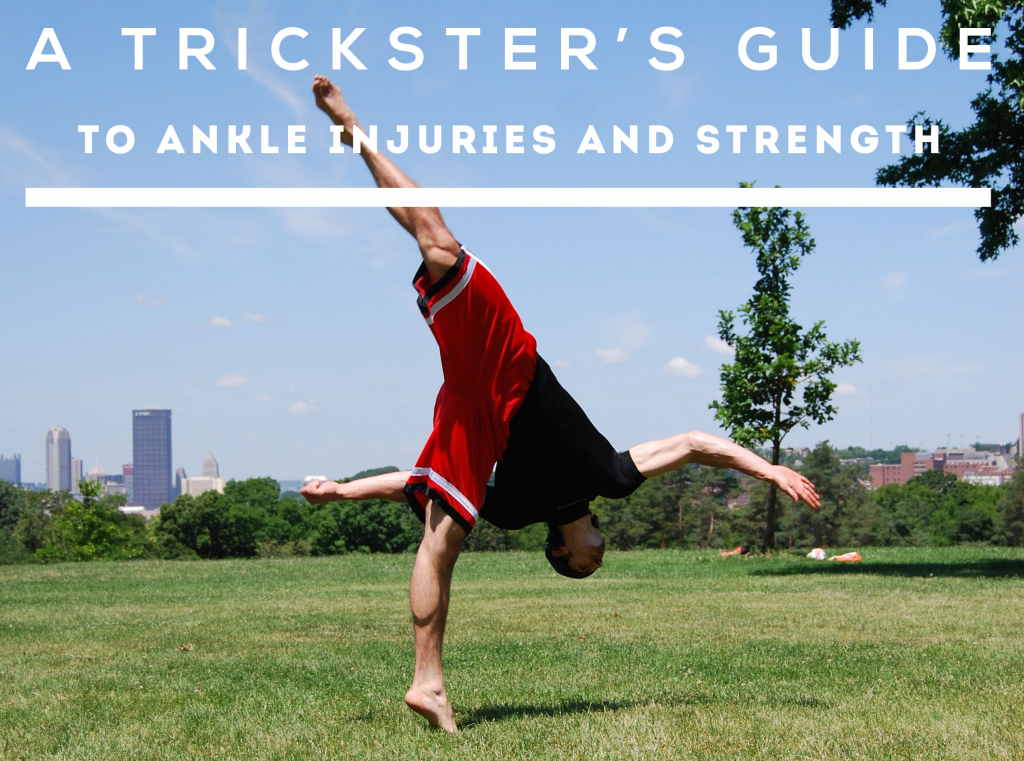In January of 2011, I broke my foot in five places during a fluke tricking accident. (Don’t bail tricks, kids. Never ends well. Your thoughts = your actions. Don’t tell yourself that things won’t end well mid-trick unless you want things to not end well.) I was on crutches for longer than I want to [...]

In January of 2011, I broke my foot in five places during a fluke tricking accident. (Don’t bail tricks, kids. Never ends well. Your thoughts = your actions. Don’t tell yourself that things won’t end well mid-trick unless you want things to not end well.)
I was on crutches for longer than I want to remember. I was in an itchy cast most of that time, too. I still remember how tough it was for me to go to sleep every single day, as my foot throbbed with pressure against the tight shell of the plastered cast.
Now, if you know anything about me, you’d know that I’m an aggressive rehabber. I firmly believing starting movement as fast as possible after an injury. Despite my doctor’s orders, I was slowly easing weight onto my foot — even to the point of squatting a few days after getting casted. I was walking with a boot before my cast was even off, and I fully believe that my aggressive attack was one of the reasons I didn’t have a rebreak — something all too common with bone breaks in the foot.
(For those wondering, the problem with my foot now is a neuroma, and that developed about seven months after I was out of my cast after an Olympic weightlifting stint — one of the reasons I can’t really do much in the way of Olympic lifts anymore, and why I simply stick to aggressive pulls that are Olympic weightlifting-esque.)
Anywhooooo, despite all of the rehab I did with my cast on, my foot was still a limp noodle when the cast came off. I could barely walk, and I had no fine motor control down there. My foot slapped against the ground with every stride, much like a girlfriend slapping a boyfriend across the face. If you want an example of how bad things were, stand up. Shift your weight onto one leg, and lift the other in the air. You’re probably balancing on one leg just fine. Yeah, I couldn’t even do that for a millisecond.
Over the next month or so, I really entangled myself in rehab so that my foot would heal correctly. Since my ankle was casted, I was primarily looking at regaining ankle function, which led me down many avenues.
The entire time, I couldn’t help but think to myself: boy, this stuff could really help tricksters.
Dogen’s Titanium Ankle tutorial often floats around as the “go to” for ankle health among tricksters, but it’s really not even a scratch on the surface of true ankle health. I really wanted tricksters to understand the foot and ankle as I had come to understand them, because I thought it could prevent some injuries.
Just recently, I got around to putting my ideas down — how I rehabbed my foot — and spun it in a way that would benefit tricksters most. I filmed videos, took pictures, and created a neat little eBook. The entire process took a bunch of my free time, and I was originally was going to sell it. After all, paying some bucks for information on ankle injury prevention would be worth more than I’d likely even charge for it. We’re talking about not only tricking downtime, but also medical bill uptime. Even a simple copay for a lot of people in America can top $20-30.
But then I thought about the mission at hand. And then I thought about most tricksters, and thought back to when I was a Dragon Ball Z inspired kid doing insanely stupid things in my backyard in the name of tricking, most of which was only possible thanks to Jujimufu — a man willing to give a lot of his free time creating tutorials to help ambitious kids like myself.
And so that’s why I decided that, at least for now, to make A Trickster’s Guide to Ankle Injuries and Strength free. You only pay if you want to pay. You can grab it here via Gumroad (a new retail platform I’m experimenting with). Feel free to put in $0. If my writing has helped you in the past, and you want to donate some money, you put whatever number in the box you feel is right.
Either way, I hope this helps you. I simply ask that, from one trickster to the next, you let each other know about this.
This isn’t the ultimate ankle injury guide, but rather a reflection of my own experiences spun in a way that will benefit you from not only a rehab standpoint (dealing with pre-existing injuries and common treatments, like why you probably shouldn’t use the RICE technique), but also an injury prevention standpoint (there’s a strengthening program to follow). I’m pretty sure that you’ll come away with a different attitude after reading it, and that’s the goal.